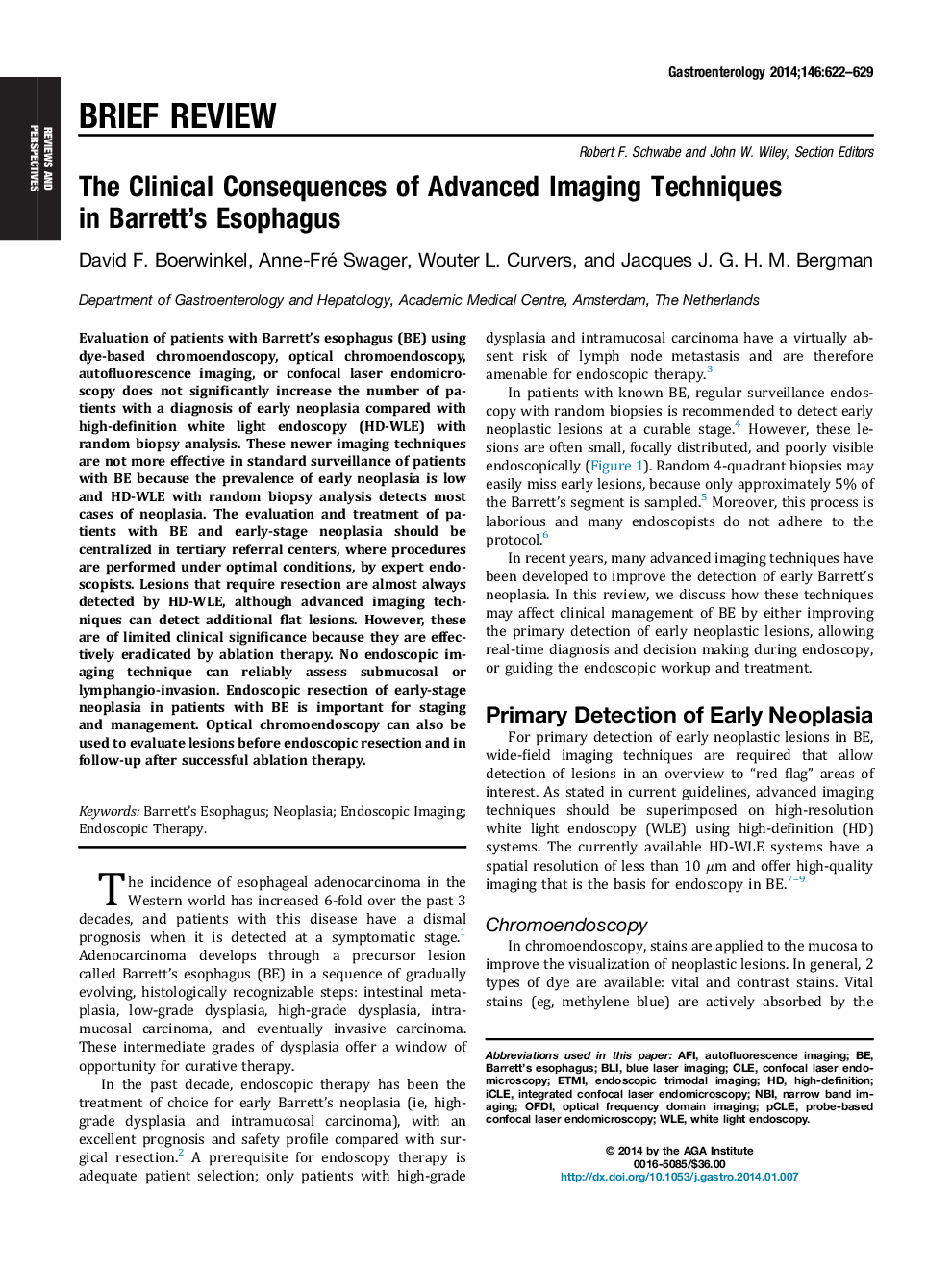| Article ID | Journal | Published Year | Pages | File Type |
|---|---|---|---|---|
| 6095453 | Gastroenterology | 2014 | 12 Pages |
Abstract
Evaluation of patients with Barrett's esophagus (BE) using dye-based chromoendoscopy, optical chromoendoscopy, autofluorescence imaging, or confocal laser endomicroscopy does not significantly increase the number of patients with a diagnosis of early neoplasia compared with high-definition white light endoscopy (HD-WLE) with random biopsy analysis. These newer imaging techniques are not more effective in standard surveillance of patients with BE because the prevalence of early neoplasia is low and HD-WLE with random biopsy analysis detects most cases of neoplasia. The evaluation and treatment of patients with BE and early-stage neoplasia should be centralized in tertiary referral centers, where procedures are performed under optimal conditions, by expert endoscopists. Lesions that require resection are almost always detected by HD-WLE, although advanced imaging techniques can detect additional flat lesions. However, these are of limited clinical significance because they are effectively eradicated by ablation therapy. No endoscopic imaging technique can reliably assess submucosal or lymphangio-invasion. Endoscopic resection of early-stage neoplasia in patients with BE is important for staging and management. Optical chromoendoscopy can also be used to evaluate lesions before endoscopic resection and in follow-up after successful ablation therapy.
Keywords
AFIOFDIiCLECLEPCLEWLENBIConfocal laser endomicroscopyprobe-based confocal laser endomicroscopywhite light endoscopyEndoscopic imagingoptical frequency domain imagingnarrow band imagingautofluorescence imagingblue laser imagingBLIEndoscopic therapyBarrett’s esophagusBarrett's esophagusNeoplasiahigh-definition
Related Topics
Health Sciences
Medicine and Dentistry
Gastroenterology
Authors
David F. Boerwinkel, Anne-Fré Swager, Wouter L. Curvers, Jacques J.G.H.M. Bergman,
